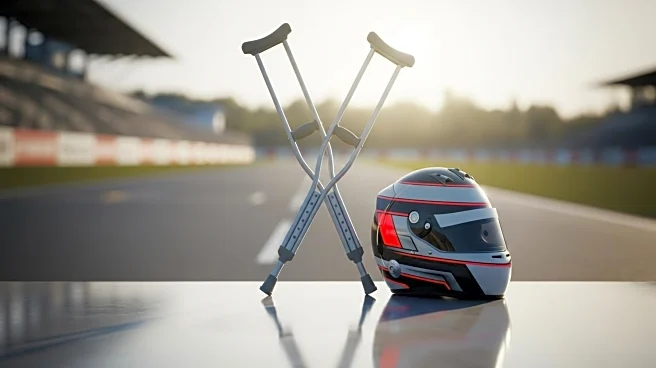What's Happening?
Ryan Moore, a prominent jockey associated with Aidan O'Brien's Ballydoyle yard, is facing the possibility of missing the remainder of the Flat racing season due to a stress fracture in his femur. Moore has been experiencing issues with his right leg since the Irish Derby weekend, which led to scans and an X-ray revealing the fracture. Despite efforts to manage the injury, it has been determined that time is the only remedy for recovery. Moore's absence comes at a critical time for the Coolmore operation, which is gearing up for several major races. Aidan O'Brien has expressed uncertainty about Moore's return this season, noting the severity of the injury and the need for rest.
Why It's Important?
Ryan Moore's injury is significant for the Ballydoyle yard and the Coolmore operation, as he is one of the world's leading jockeys. His absence could impact the team's performance in upcoming high-stakes races, potentially affecting their competitive edge. The injury also highlights the physical demands and risks associated with professional horse racing, where jockeys often push through pain to maintain their schedules. Moore's situation underscores the importance of health and safety protocols in the sport, as well as the need for adequate recovery time to prevent long-term damage.
What's Next?
With Moore sidelined, Ballydoyle will need to rely on other jockeys to fill the gap during his recovery. Wayne Lordan, another jockey associated with the team, is currently suspended for the Irish Champions Festival, adding to the challenge of finding suitable replacements. The team will likely strategize to ensure they remain competitive in upcoming races, possibly rotating jockeys or adjusting their approach to race entries. Moore's recovery timeline remains uncertain, and his return will depend on the healing process and medical assessments.
Beyond the Headlines
Moore's injury could prompt discussions within the horse racing community about the physical toll on jockeys and the importance of early injury detection. It may lead to increased scrutiny on training and recovery practices, as well as the potential for technological advancements in injury prevention and management. The incident also raises questions about the sustainability of current racing schedules and the pressures faced by jockeys to perform despite health concerns.














